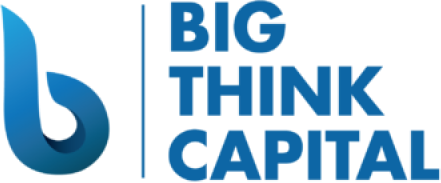Maximizing Your Working Capital in the Midst of Federal Interest Rate Hikes: A Guide for Small Businesses
Estimated reading time: 5 minutes
- Understand the impact of interest rates on working capital
- Implement strategies to optimize cash flow and explore financing options
- Leverage your business credit profile to improve financing terms
- Stay informed about economic indicators that affect your business
- Build a diversified funding strategy and regularly review financial performance
Table of Contents
- Understanding the Impact of Interest Rates on Working Capital
- Strategies to Maximize Your Working Capital
- Leveraging Your Business Credit Profile
- Stay Informed About Economic Indicators
- Practical Takeaways for Business Owners
- Conclusion
- FAQ Section
Understanding the Impact of Interest Rates on Working Capital
The Federal Reserve raises interest rates to control inflation, stabilize the economy, or address growth concerns. These increases directly impact lending rates, making it more expensive for businesses to borrow money. In turn, this affects working capital, which is essential for managing day-to-day operations, such as inventory purchases, payroll, and other short-term financial obligations.
- Working Capital Basics: Working capital is the difference between current assets and current liabilities. It reflects a company’s short-term liquidity position, providing insights into its financial health.
- Consequences of Rising Rates: Higher interest rates can lead to increased borrowing costs and reduced cash flow, compelling many business owners to rethink their funding strategies.
Strategies to Maximize Your Working Capital
To navigate the complexities of rising interest rates effectively, here are several strategies small business owners can adopt:
1. Optimize Cash Flow Management
Effective cash flow management is paramount during uncertain economic times. Monitoring when money enters and exits your business allows for better planning and informed decision-making.
- Implement Cash Flow Forecasting: Use software or spreadsheets to project future cash flow over the coming months. This helps predict shortfalls and identify opportunities for improvement.
- Encourage Timely Payments: Simplify the invoicing process and offer discounts for early payments to improve cash flow.
- Manage Inventory Wisely: Analyze inventory turnover rates and adjust stocking levels accordingly to prevent over-investment in excess stock.
2. Explore Alternative Financing Options
As traditional lending options become more expensive, exploring alternative financing can help maintain liquidity.
- Merchant Cash Advances (MCA): These offer quick access to funds based on future credit card sales. While this option can be more costly than traditional loans, it provides essential capital when needed.
- Lines of Credit: Establishing a line of credit allows business owners to draw funds when necessary, ensuring access to capital without the pressures of immediate repayment.
- SBA Loans: Despite higher interest rates, Small Business Administration loans remain an attractive option due to their favorable terms compared to conventional loans. The SBA 7(a) loan, for example, allows smaller businesses to finance considerable amounts while enjoying longer repayment periods.
3. Cut Unnecessary Costs
Reviewing expenses is a crucial step in maximizing working capital. Here are some ways to identify and reduce costs:
- Conduct Expense Audits: Analyze current expenditures and identify areas where you can minimize spending without sacrificing quality.
- Negotiate with Suppliers: Reach out to vendors to negotiate better terms or discounts on bulk purchases. Building strong relationships can lead to favorable conditions.
- Embrace Technology: Invest in technology that can streamline processes, reduce manual labor, and ultimately save costs over time.
Leveraging Your Business Credit Profile
In the midst of rising interest rates, your business credit profile plays a pivotal role in determining your access to financing. Taking steps to improve your creditworthiness can facilitate better borrowing terms in the future.
- Monitor Your Business Credit Reports: Regularly check your business credit reports for inaccuracies or negative information that could adversely affect your credit score. Companies like Dun & Bradstreet provide resources to request corrections.
- Pay Bills on Time: Timely payments are one of the most significant factors influencing your credit score. Establish automated payments or reminders to maintain your reputation with creditors.
- Limit New Debt Applications: Consistently applying for new credit can lower your score. Instead, focus on improving your existing credit lines and relationships.
Stay Informed About Economic Indicators
Keeping abreast of economic trends can help you adapt your business strategies in a rapidly changing landscape. Here are key indicators to monitor:
- Interest Rates: Regularly follow updates from the Federal Reserve about potential changes in interest rates. Use resources like the Fed’s official site for the latest news (https://www.federalreserve.gov).
- Inflation Rates: Inflation can affect consumer spending power. Monitoring the Consumer Price Index (CPI) can provide insights into whether you can increase prices or if you need to consider cost adjustments.
- Economic Growth Indicators: Pay attention to GDP growth rates and other economic indicators to anticipate shifts in demand for your products or services.
Practical Takeaways for Business Owners
Maximizing your working capital during periods of rising interest rates can help safeguard your business’s financial future. Here are three practical takeaways:
- Build a Cash Reserve: Aim to maintain a buffer of cash that can sustain your operations during lean periods. This reserve can provide the liquidity needed to navigate expenses without relying solely on credit.
- Diversify Funding Sources: Do not rely on one type of financing. Explore a mix of options like merchant cash advances, lines of credit, and SBA loans to create a flexible funding strategy.
- Regularly Review Financial Health: Set aside time monthly or quarterly to review your business’s financial performance, cash flow, and financing needs. Adjust your strategies based on this review to ensure you stay on track.
Conclusion
In a landscape marked by fluctuating interest rates and economic uncertainty, small business owners must take proactive steps to maximize their working capital. Through effective cash management, alternative financing options, and cost-cutting strategies, your business can remain resilient in these challenging times.
At Big Think Capital, we are dedicated to empowering small businesses with the financial resources they need to thrive. Our team of funding experts is here to guide you through the financing options available to you in 2025 and beyond.
If you are ready to explore how our tailored solutions can help your business succeed, visit us at bigthinkcapital.com or contact us to speak with a funding expert today. Maximizing your working capital starts with the right guidance and support. Let us help you pave the way to financial success.
FAQ Section
A: Rising interest rates can increase borrowing costs, affecting cash flow and making it more expensive to finance operations. Businesses may need to adjust their funding strategies accordingly.
A: Best strategies include implementing cash flow forecasting, encouraging timely payments from clients, and managing inventory levels efficiently to prevent excess spending.
A: Yes, exploring alternative financing like merchant cash advances, lines of credit, or SBA loans can be beneficial, especially as traditional lending becomes more expensive.
A: Monitor your business credit reports for inaccuracies, ensure timely payment of bills, and limit new applications for Credit to maintain a healthier credit score.
A: Staying informed allows business owners to adapt their strategies to economic changes, helping them anticipate shifts in demand and make informed financial decisions.






